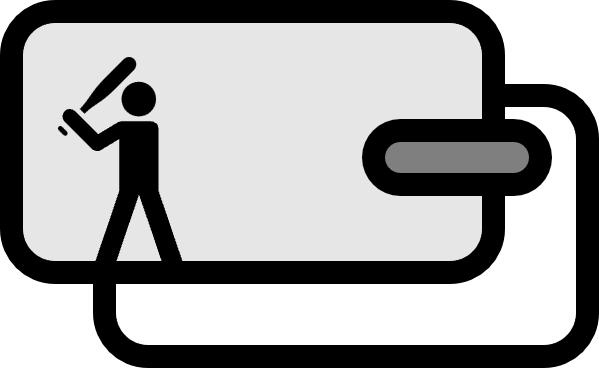Definition of Slugging Percentage in Baseball
Definition 1 2
- The total number of bases achieved through a batter’s hit is referred to as Total Bases, abbreviated as TB.
- The ratio of Total Bases TB to At Bats AB is called the Slugging Percentage, abbreviated as SLG. In other words, the slugging percentage is defined as follows with respect to total bases from hits $H_{k}$ and Home Runs HR. $$ SLG := {{ H_{1} + 2 H_{2} + 3 H_{3} + 4 HR } \over { AB }} $$
Explanation
For someone unfamiliar with baseball, the concept of batting average is comparatively easy to understand. However, without knowledge of baseball, the significance of these numbers can be elusive. Even viewing the actual formula might not raise any eyebrows for a baseball fan. The logic that a double counts for twice as much as a single because it touches twice the bases makes sense intuitively. Yet, for those not familiar, it can come across as a rather complicated equation.
To summarize, the essence of slugging power could be described as ‘mostly the offensive power generated from the bat’. Though baseball scores come from both eyes and legs, the slugging percentage quantifies the attack power created through hitting, making it easier to comprehend. If distinguishing between bat, eyes, and legs is difficult, it is akin to viewing it as a ‘Str’ (Strength) stat in common games.
Sabermetrics
As the formula illustrates, slugging percentage ranges between 0 and 4. For instance, if a player hits a single and a home run, the slugging percentage would be 4. This scenario typically arises only in extremely small sample sizes. As the number of plate appearances increase and the records stabilize, it seldom exceeds 1. Due to this scale, the magnitude and significance of the numbers might not always align, but there is no harm in simply considering higher values as better.
From a certain viewpoint, since a home run is conceptually a four-base hit, it can be mathematically represented as follows: $$ SLG = {{ 1 } \over { AB }} \sum_{k=1}^{4} k H_{k} $$ Regarding this perspective, slugging percentage is thought to correct the issue with the conventional batting average, which uniformly valued all types of hits, by adjusting for the actual advancement on base with weighted consideration.
In this context of calculating slugging percentage, a double is more valuable than two singles. Though the numerator increases by 2 in both scenarios, two singles results in an additional at-bat. $$ 2 = {{ 2 \cdot 1 } \over { 1 }} > {{ 1 \cdot 2 } \over { 2 }} = 1 $$ This reflects the notion that merely hitting singles is not enough; hitting for power is essential.
